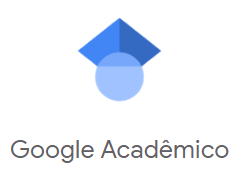Diretrizes éticas
Ética e boas práticas para publicação
O ato de publicar envolve diferentes atores, sendo que cada um desempenha um papel importante na execução desses objetivos. Assim, todas as partes envolvidas - o autor, o editor e Comissão Editorial da revista, e os revisores - têm responsabilidades para manter boas práticas éticas.
- Editores
A prática editorial e a relação do editor com autores e avaliadores estão amparadas no Guia para editores do Committee on Publication Ethics (COPE).
Toda decisão editorial é fundamentada na originalidade, contribuição, pertinência, vigência temática, estrutura geral e cumprimento das políticas editoriais para atendimento do escopo da revista.
- Avaliadores
A avaliação se baseia no mérito do trabalho, não influenciada, positiva ou negativamente, por motivos pessoais ou financeiros.
A Revista P2P & INOVAÇÃO - Informação e Plataformas Digitais (P2P & I2PD) adota em seu processo editorial a avaliação duplo-cego anônima (double-blind peer review). As submissões e os detalhes das revisões são mantidos sob confidencialidade.
O avaliador deve se certificar e informar aos editores de qualquer potencial conflito de interesse antes do aceite da avaliação ou durante o processo.
Ao se deparar com alguma irregularidade em relação ao artigo avaliado, o avaliador deve comunicar o editor. Exemplos de possíveis irregularidades são: identificação de plágio; fabricação e/ou falsificação dos resultados; publicação redundante.
- Autores
A indicação de autoria em um artigo científico, seguindo o Guia para autores da COPE (inglês).
O(s) autor(es) deve(m) declarar a existência de conflito de interesses quando for o caso.
Retratação e manifestação de preocupação
O editor tem o dever de agir na suspeita ou alegação de má conduta identificada. Esta investigação se estende tanto às submissões quanto aos artigos publicados.
São utilizados como instrumento os fluxogramas COPE para apurar fatos e determinar as ações necessárias na resolução dos casos.
Conflito de Interesses
O conflito de interesses pode ser de natureza pessoal, comercial, política, acadêmica ou financeira. Conflitos de interesses podem ocorrer quando autores, revisores ou editores possuem interesses que podem influenciar na elaboração ou avaliação de manuscritos. Ao submeter o manuscrito, os autores são responsáveis por reconhecer e revelar conflitos financeiros ou de outra natureza que possam ter influenciado o trabalho. Caso haja, ainda que potencialmente, conflito de interesse, o(s) autor(es) deve(m) informá-lo em documento próprio assinado e anexado à plataforma de submissão.
Na arte de avaliação de um manuscrito, a envolver autores e revisores, é verificado com rigor, a partir de sua editoria, o estabelecimento de uma política a evitar envolvimento de pessoas a manterem relações pessoais, de amizade ou adversidade, assim como a envolver pessoas e instituições.
Este procedimento visa dar confiabilidade ao processo de análise do material submetido, com consequente aumento da credibilidade dos artigos publicados. Neste sentido, solicita-se aos autores e revisores contatarem o Conselho Editorial da Revista em caso de se evidenciar: a) ligações e conflitos pessoais e institucionais (de caráter familiar e partidário) entre revisores e autores; b) apoio financeiro obtido no desenvolvimento do trabalho e a incidir em leitura que possa prejudicar a confiabilidade do material produzido.
Avaliação por pares
P2P & I2PD adota em seu processo editorial a avaliação duplo-cego anônima (double-blind peer review).
Os originais são pré-avaliados pelos editores, que terão em consideração: originalidade, contribuição, pertinência, vigência temática, estrutura geral e cumprimento das políticas editoriais. Caso contrário, os autores serão notificados em um prazo de 15 dias com a rejeição e arquivamento do artigo.
Os originais serão encaminhados aos avaliadores, todos com o grau mínimo de Doutor ou reconhecido notório saber, no menor tempo possível. O processo de seleção de artigos envolve avaliação de especialistas ad hoc e do Comitê Editorial, que deverá selecionar os títulos a serem publicados.
Os originais serão publicados no idioma original de submissão, com preferência para trabalhos em português, espanhol, ou inglês. Submissões em outros idiomas podem não ser processadas.
Todos os trabalhos terão seus títulos, resumos e palavras-chave traduzidos em português, espanhol, ou inglês.
A revista se reserva o direito de efetuar alterações de ordem normativa, ortográfica e gramatical nos originais, com vistas a manter o padrão culto da língua, respeitado o estilo do autor. As provas finais não serão devolvidas aos autores.
As opiniões emitidas nos artigos são de responsabilidade exclusiva de seus autores.
Todos os artigos publicados estão submetidos às licenças Creative Commons, garantidos todos os direitos morais dos autores.
Os critérios a serem considerados são: relevância do tema; grau de contribuição científica, resultante ou não de pesquisa; ineditismo; originalidade da abordagem; propriedade e atualização da bibliografia; adequação ao perfil editorial da P2P & I2PD; linguagem e redação; estrutura da argumentação; coerência e correção do texto.
Os editores e avaliadores se reservam o direito a rejeitar aquelas obras que tenham um conteúdo significativamente similar (plágio) com outras em qualquer parte do processo onde se identifique. Para tal fim, a revista utiliza o software "Plag",para a deteção de plágio.
Declaração de Privacidade
Os nomes e endereços informados neste periódico serão usados exclusivamente para os serviços prestados por esta publicação, não sendo disponibilizados para outras finalidades ou a terceiros. Segundo o estabelece a LEI Nº 13.709, DE 14 DE AGOSTO DE 2018, Lei Geral de Proteção de Dados LGPD, nos seus Art 3° e Art 23.














